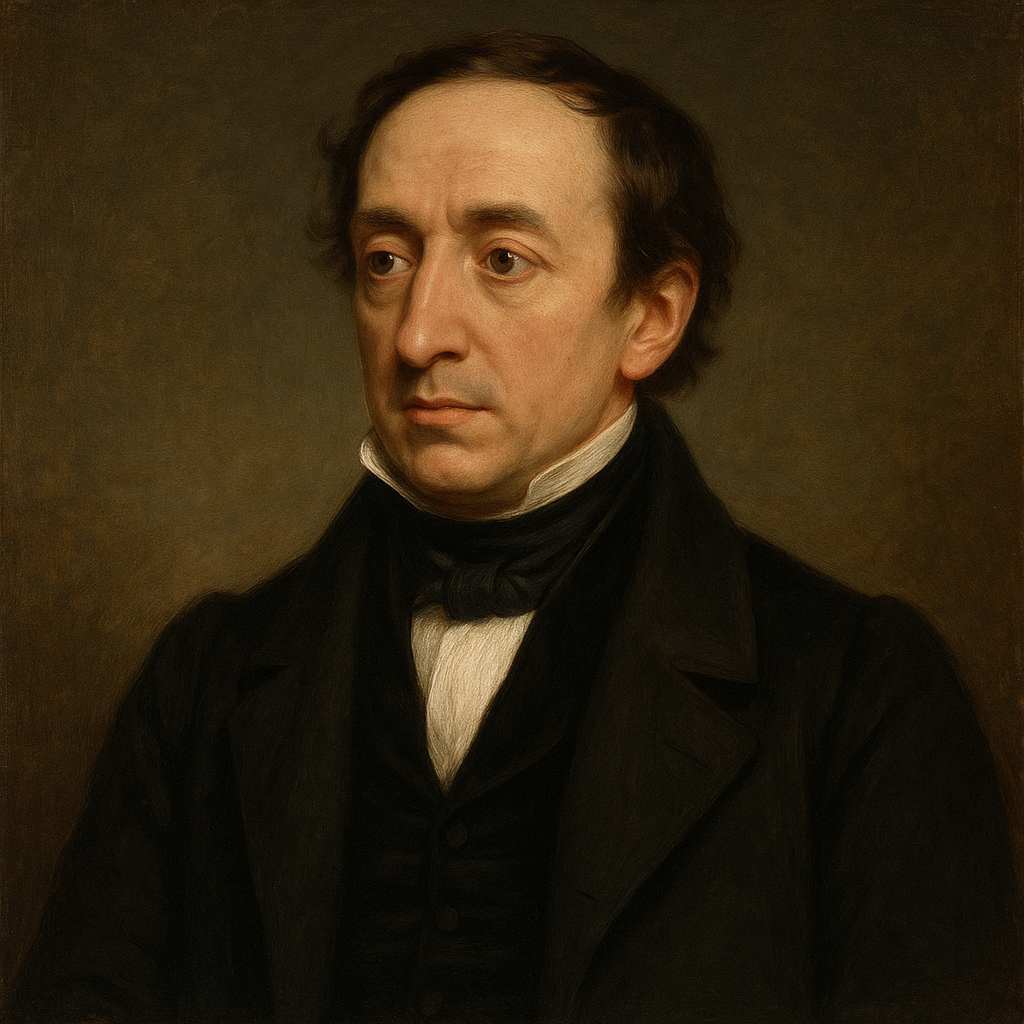The Song of the Shirt
Thomas Hood
1799 to 1845

With fingers weary and worn,
With eyelids heavy and red,
A Woman sat, in unwomanly rags,
Plying her needle and thread—
Stitch! stitch! stitch!
In poverty, hunger, and dirt,
And still with the voice of dolorous pitch
She sang the "Song of the Shirt!"
"Work! Work! Work!
While the cock is crowing aloof!
And work—work—work,
Till the stars shine through the roof!
It's O! to be a slave
Along with the barbarous Turk,
Where woman has never a soul to save
If this is Christian work!
"Work—work—work
Till the brain begins to swim,
Work—work—work
Till the eyes are heavy and dim!
Seam, and gusset, and band,
Band, and gusset, and seam,
Till over the buttons I fall asleep,
And sew them on in a dream!
"O, Men with Sisters dear!
O, Men! with Mothers and Wives!
It is not linen you're wearing out,
But human creatures' lives!
Stitch—stitch—stitch,
In poverty, hunger, and dirt,
Sewing at once, with a double thread,
A Shroud as well as a Shirt.
"But why do I talk of Death!
That Phantom of grisly bone,
I hardly fear his terrible shape,
It seems so like my own—
It seems so like my own,
Because of the fasts I keep;
O God! that bread should be so dear,
And flesh and blood so cheap!
"Work—work—work!
My labour never flags;
And what are its wages? A bed of straw,
A crust of bread—and rags.
That shatter'd roof,—and this naked floor—
A table—a broken chair—
And a wall so blank, my shadow I thank
For sometimes falling there!
"Work—work—work!
From weary chime to chime,
Work—work—work—
As prisoners work for crime!
Band, and gusset, and seam,
Seam, and gusset, and band,
Till the heart is sick, and the brain benumb'd,
As well as the weary hand.
"Work—work—work,
In the dull December light,
And work—work—work,
When the weather is warm and bright—
While underneath the eaves
The brooding swallows cling,
As if to show me their sunny backs
And twit me with the spring.
"O, but to breathe the breath
Of the cowslip and primrose sweet!—
With the sky above my head,
And the grass beneath my feet;
For only one short hour
To feel as I used to feel,
Before I knew the woes of want
And the walk that costs a meal!
"O, but for one short hour!
A respite however brief!
No blessed leisure for Love or Hope,
But only time for Grief!
A little weeping would ease my heart,
But in their briny bed
My tears must stop, for every drop
Hinders needle and thread!
"Seam, and gusset, and band,
Band, and gusset, and seam,
Work, work, work,
Like the Engine that works by Steam!
A mere machine of iron and wood
That toils for Mammon's sake—
Without a brain to ponder and craze
Or a heart to feel—and break!"
—With fingers weary and worn,
With eyelids heavy and red,
A Woman sat, in unwomanly rags,
Plying her needle and thread—
Stitch! stitch! stitch!
In poverty, hunger, and dirt,
And still with a voice of dolorous pitch,—
Would that its tone could reach the Rich!—
She sang this "Song of the Shirt!"
Thomas Hood's The Song of the Shirt
Introduction
Thomas Hood's "The Song of the Shirt" stands as a poignant testament to the harsh realities of industrial-era labor, particularly as experienced by women in the garment industry. Published in 1843, this poem serves as a searing indictment of the exploitative practices that characterized much of 19th-century labor conditions. Through its haunting refrain and vivid imagery, Hood crafts a work that transcends mere social commentary to become a powerful piece of literature that continues to resonate with readers today. This analysis will delve into the poem's thematic concerns, its use of poetic devices, its historical context, and its enduring relevance in contemporary discourse on labor rights and social justice.
Thematic Analysis
At its core, "The Song of the Shirt" is a lament for the loss of humanity in the face of industrialization. The central figure of the poem, an unnamed seamstress, becomes a symbol for all those trapped in the merciless gears of industrial capitalism. Hood explores several interconnected themes through her plight:
Dehumanization of Labor
The repetitive nature of the seamstress's work is emphasized through the relentless repetition of "Work—work—work" and "Stitch—stitch—stitch." This linguistic device mirrors the mechanical nature of her task, reducing her to "A mere machine of iron and wood / That toils for Mammon's sake." The comparison to a steam engine further underscores the dehumanizing effect of her labor, stripping her of her individuality and reducing her to a cog in the industrial machine.
Exploitation and Poverty
Hood vividly portrays the seamstress's dire living conditions, from her "unwomanly rags" to her meager wages of "A bed of straw, / A crust of bread—and rags." The stark contrast between the value of her labor and her compensation is encapsulated in the line "O God! that bread should be so dear, / And flesh and blood so cheap!" This economic exploitation is presented as a form of modern slavery, with the seamstress ironically noting that it's "O! to be a slave / Along with the barbarous Turk."
Loss of Nature and Freedom
The poem juxtaposes the seamstress's confined existence with glimpses of the natural world she can no longer enjoy. References to "the cowslip and primrose sweet" and "the brooding swallows" serve to highlight her alienation from nature and, by extension, from her own humanity. The longing for "only one short hour" to experience the freedom of nature underscores the totality of her confinement to labor.
Social Critique and Call to Action
Hood's poem is not merely descriptive but prescriptive, calling attention to the complicity of society in the seamstress's suffering. The appeal to "Men with Sisters dear!" and "Men! with Mothers and Wives!" serves as a direct challenge to the reader, urging recognition of the human cost of cheap labor. The final stanza's wish that the seamstress's voice "could reach the Rich!" is a clear call for social reform and economic justice.
Poetic Devices and Structure
Hood employs a range of poetic devices to enhance the emotional impact of his work:
Rhythm and Repetition
The poem's rhythm mimics the relentless nature of the seamstress's work. The repetition of "Work" and "Stitch" creates a hypnotic effect, drawing the reader into the monotony of her existence. This repetition also serves to emphasize the unending nature of her labor, with no respite in sight.
Imagery and Metaphor
Hood's vivid imagery brings the seamstress's world to life. The "fingers weary and worn" and "eyelids heavy and red" paint a picture of physical exhaustion, while the "shatter'd roof" and "naked floor" vividly depict her impoverished living conditions. The metaphor of sewing "A Shroud as well as a Shirt" powerfully links her labor to death, suggesting that her work is literally killing her.
Irony and Contrast
The poem is rife with ironic contrasts that heighten its emotional impact. The juxtaposition of "Christian work" with slave labor, and the comparison of the seamstress's life to that of a criminal ("As prisoners work for crime!") serve to underscore the injustice of her situation. The contrast between her confinement and the freedom of nature further emphasizes the oppressive nature of her work.
Structure and Form
The poem's structure, with its alternating long and short lines and its use of a refrain, mirrors the rhythm of the seamstress's work. The circular nature of the poem, beginning and ending with similar stanzas, reinforces the idea of the endless cycle of labor in which she is trapped.
Historical Context
"The Song of the Shirt" was written during a period of rapid industrialization in England, known as the Industrial Revolution. This era saw a significant shift in labor practices, with many workers, particularly women and children, subjected to long hours, low wages, and hazardous working conditions. The garment industry, in particular, was notorious for its exploitation of female workers, who were often paid by the piece and forced to work extremely long hours to earn a subsistence wage.
Hood's poem was published in Punch magazine in 1843 and quickly became a sensation, resonating with readers across social classes. It contributed to growing public awareness of the plight of sweatshop workers and played a role in the broader movement for labor reform in the 19th century.
Contemporary Relevance
While "The Song of the Shirt" is firmly rooted in its 19th-century context, its themes and concerns remain startlingly relevant today. In an era of globalized production and fast fashion, the issues of worker exploitation, particularly in the garment industry, continue to make headlines. The collapse of the Rana Plaza factory in Bangladesh in 2013, which killed over 1,100 workers, brought renewed attention to the human cost of cheap clothing production.
Moreover, the poem's exploration of the dehumanizing effects of repetitive labor and the alienation of workers from the fruits of their labor resonates with contemporary discussions about automation, artificial intelligence, and the future of work. As in Hood's time, questions of economic justice, the value of labor, and the human cost of consumer culture remain at the forefront of social and political discourse.
Conclusion
Thomas Hood's "The Song of the Shirt" stands as a masterful example of socially engaged poetry. Through its compelling use of rhythm, imagery, and emotional appeal, the poem brings to life the struggles of an exploited worker, transforming her individual plight into a powerful critique of industrial capitalism and social inequality. Its enduring relevance speaks to the universal nature of its themes and the continuing struggle for worker's rights and human dignity in the face of economic exploitation.
As both a literary work and a piece of social commentary, "The Song of the Shirt" demonstrates the power of poetry to bear witness to human suffering, to challenge social norms, and to advocate for change. In its vivid portrayal of the seamstress's struggles and its impassioned call for justice, Hood's poem continues to resonate, reminding us of the human cost of unchecked industrialization and the ongoing need for vigilance in protecting workers' rights and dignity.
This text was generated by AI and is for reference only. Learn more
Want to join the discussion? Reopen or create a unique username to comment. No personal details required!



Comments
No comments yet. Be the first to comment!